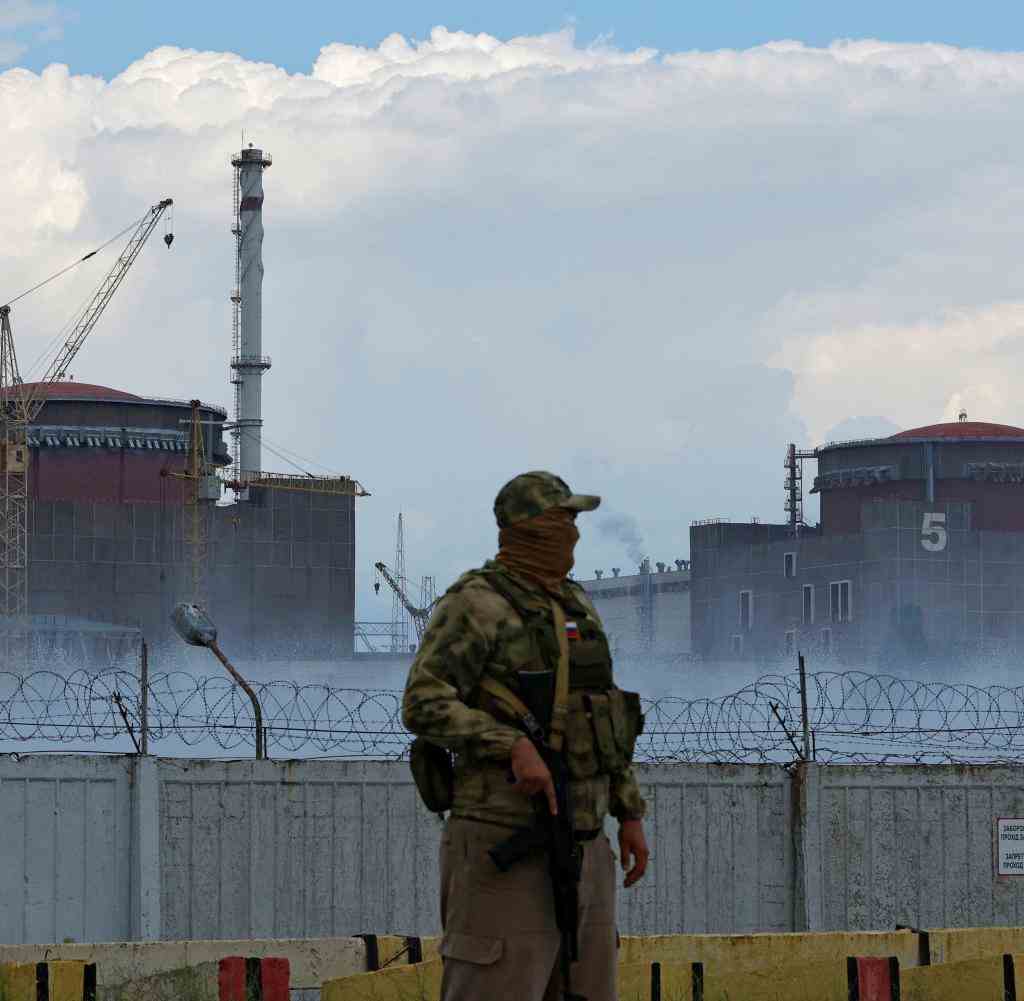That’s what Russia intends to do with the nuclear power plant in Zaporizhia
“Russian forces have positioned heavy weapons there”
After repeated shelling of the Zaporizhia nuclear power plant, the Russian occupying forces stationed air defense systems around the plant. The nuclear power plant is in normal operation, but attacks can cause serious damage, says WELT reporter Steffen Schwarzkopf.
After days of uncertainty, it is becoming clearer what Russia intends to do with the nuclear power plant in Zaporizhia, Ukraine. According to the Ukrainian nuclear authority, the nuclear power plant is to be connected to the Russian power grid and supply Crimea with nuclear power. However, the process carries great risks.
Dhe President of the Ukrainian nuclear agency Energoatom has explainedthe reason for Russia’s actions at the Zaporizhia nuclear power plant is the plan to detach it from the Ukrainian power grid and instead to supply the Russian-occupied Crimea with nuclear power from the reactors.
“For this purpose, Russia is deliberately damaging the lines of the nuclear power plant, which are connected to the energy system of Ukraine,” Petro Kotin explained on Ukrainian television in the evening.
In the past few days, Russia has already carried out attacks on three of the four existing high-voltage lines. The nuclear power plant is currently only connected to the power grid via a production line, which Kotin described as “extremely dangerous”.
“If this line is also cut, the nuclear power plant can only be operated with diesel generators. Then it all depends on how reliable they are and how high the fuel supply is,” Kotin continues.
Completely detached from Ukraine in the end
Behind this is a plan by the Russian electricity operator Rosatom, which the Russian army is implementing on site. Ultimately, the nuclear power plant is to be completely decoupled from Ukraine and eventually connected to Russia’s power grid.
Zaporizhia nuclear power plant
Source: Infographic WORLD
During this process, the Ukrainian territories around Kherson and Zaporizhia occupied by Russia would briefly receive their electricity from the Dschankoi power plant in the Crimea and a hydroelectric power plant in Kakovka on the Dnieper, the flow of electricity from which should then eventually reach the nuclear power plant, which in turn would then supply nuclear power to this from Russia operated network would feed.
At times, however, the nuclear power plant has to be completely cut off from the energy supply, which Kotin described as the most dangerous moment, since a failure of the diesel generators and thus the cooling could lead to a core meltdown. “We are only one step away from the first stage of the Fukushima disaster,” he underscored the seriousness of the situation.
Wind blows to Russia
The nuclear power plant has come under fire twice in the past few days. Parts of the plant were damaged and a reactor had to be shut down. Russia and Ukraine blame each other for the attacks. Ukrainian President Volodymyr Zelenskyy also warned of a nuclear catastrophe on Monday.
In concrete terms, the local population in particular would be threatened by a potential release. “There would be a zone of 50 to 100 kilometers in which it would no longer be possible to stay. Several hundred kilometers away, the environment would still be significantly contaminated,” explained Wolfgang Raskob, an expert in nuclear safety research at the Karlsruhe Institute of Technology (KIT), in an interview with WELT over the weekend.
“According to our calculations, less than 10 percent of the time the wind blows in a westerly direction, i.e. towards Germany,” says Raskob. On many days, the wind is directed “full east towards Russia.” In the event of a disaster, Russian areas would also be threatened.
“Kick-off Politics” is WELT’s daily news podcast. The most important topic analyzed by WELT editors and the dates of the day. Subscribe to the podcast at Spotify, Apple Podcasts, Amazon Music or directly via RSS feed.



